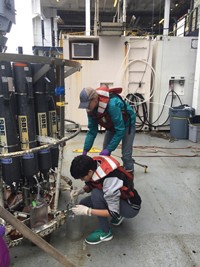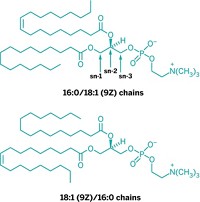Advertisement
Grab your lab coat. Let's get started
Welcome!
Welcome!
Create an account below to get 6 C&EN articles per month, receive newsletters and more - all free.
It seems this is your first time logging in online. Please enter the following information to continue.
As an ACS member you automatically get access to this site. All we need is few more details to create your reading experience.
Not you? Sign in with a different account.
Not you? Sign in with a different account.
ERROR 1
ERROR 1
ERROR 2
ERROR 2
ERROR 2
ERROR 2
ERROR 2
Password and Confirm password must match.
If you have an ACS member number, please enter it here so we can link this account to your membership. (optional)
ERROR 2
ACS values your privacy. By submitting your information, you are gaining access to C&EN and subscribing to our weekly newsletter. We use the information you provide to make your reading experience better, and we will never sell your data to third party members.
Environment
Dissecting DOM
Chemical Analysis: New approach probes dissolved organic matter, one of Earth's most complex natural substances
by Laura Cassiday
April 13, 2011

Aquatic organisms release organic molecules that dissolve and persist in the water, providing detailed chemical fingerprints of an ecosystem's inhabitants over thousands of years. Now researchers have found a way to unlock the secrets of dissolved organic matter (DOM), an important step in elucidating the environmental origins and impacts of the complex chemical mixture (Environ. Sci. Technol., DOI: 10.1021/es103425s).
DOM in ocean water is remarkably stable, with an average age of 6,000 years. However, if global warming or other environmental changes speed up DOM's decomposition by even 1%, the resulting carbon dioxide flux into the atmosphere will be greater than that produced by human fossil fuel usage, says Andre Simpson, a chemist at the University of Toronto, Scarborough. Because DOM represents a major carbon reservoir as well as a historic record of aquatic life, scientists are eager to characterize its makeup.
But this analysis is no simple feat. "DOM is believed to be the world's most complex organic mixture," Simpson says. A single milliliter of water can contain thousands or even millions of distinct organic molecules. Such a mixture confounds classical analytical techniques like mass spectrometry and NMR: Molecular signatures overlap, making it impossible for researchers to identify individual structures.
Previously, researchers tried to separate components of DOM using high-performance liquid chromatography (HPLC). However, DOM's chemical diversity and the tendency of its components to aggregate into large "supermolecules" foiled these attempts. So Simpson and his colleagues turned to a variant of HPLC, known as hydrophilic interaction chromatography (HILIC). Because DOM has many polar constituents, they separate more readily by HILIC than by HPLC methods based on hydrophobic interactions or size exclusion.
Using HILIC, the researchers separated DOM in a water sample from Georgia's Suwannee River into 80 fractions. Two-dimensional NMR spectra revealed the success of their approach. In just one of the fractions, the team identified more unique chemical structures —27—than they did in the entire unfractionated DOM sample.
Many DOM molecules appear to be derivatives of terpenoids, Simpson says. These compounds "are made by living species as pigments, steroids, and scents." Because scientists have established that many species produce unique terpenoids, DOM could serve as a chemical record of "long-extinct species, changes in ocean populations over time, and the impact of climate change on ocean life," he says.
Brian Kelleher, a chemist at Dublin City University in Ireland, says that Simpson's technique has the potential to "expose a treasure chest of compounds, some known and some novel." He adds that identifying DOM components may provide clues as to why many components of the mixture are unusually stable, whereas others decompose and release carbon dioxide into the atmosphere.





Join the conversation
Contact the reporter
Submit a Letter to the Editor for publication
Engage with us on Twitter